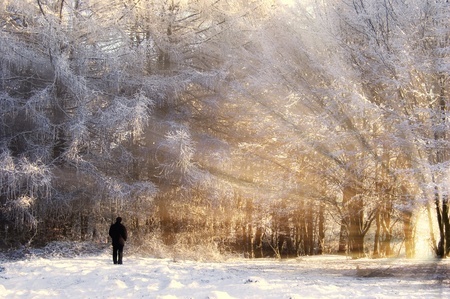Dancing with Winter Blues
- Jan 04, 2016
- By Woody Pollock
- In News
- Comments Off on Dancing with Winter Blues
So, I live in the great Northwest or Cascadia as many of us here refer to it. I love where I live. Scenic beauty, access to nature, recreation out my back door and room to breathe. Spring, summer and fall in the Puget Sound are glorious and truly my idea of paradise. Winter; not so much.
Like many folks that live closer to the poles than the equator, I struggle when the days get short and gray. My mood dips easily into sullen and depressive states. Holidays and frequent gatherings with friends and family means an abundance of calorie rich/nutrient poor foods well within reach at a time when my intake goes up as a way to self-sooth. Energy and motivation to start new projects or exercise drop off substantially and as a result the seasonal weight gain occurs yet again. As the pounds go up, my mood dips deeper down, requiring more soothing and comfort (read food) and so on and so on.
My hunch is this pattern sounds familiar to many. Studies indicate that seasonal depression accounts for 10% of all cases of major depression and women are more likely to experience symptoms than men. Seasonal depression, also known as “winter blues,” and Seasonal Affective Disorder are both serious conditions that deserve attention, intervention and care. Seeking advice from a health care professional is recommended before engaging in any change to your personal health care regimen. If you are struggling with your mood this winter there is hope for improving your experience.
What helps?
Light Therapy: The primary (and most widely accepted) treatment for seasonal depression is light therapy. Simply getting more of what is missing (light) is the prescription. Buying a specific appliance, while helpful is not actually necessary. Increasing the amount of time exposed to daylight, even on cloudy days, has been proven to have a positive effect on seasonal depression. This does not mean you have to actually go outside, though it is recommended. Some simple environmental changes can make a big difference. Sitting closer to a window or shifting your work space to allow for more natural light are a start. Supplementing with artificial light designed to mimic daylight is what light boxes are all about and the technology is simple and affordable. While it’s easy to make excuses about staying under the covers when it’s cold and wet outside, this is exactly the opposite of helpful.
Talk Therapy: Recent research indicates that talk therapies and specifically Cognitive Behavioral Therapy (CBT) are as effective in the short term and more effective in the long term than Light Therapy. Engaging with a therapist who works with this evidence-based modality can have an significant impact. This is great news! It stands to reason that combining more exposure to daylight and CBT will improve results even more and create lasting change. If you haven’t already, talk to your therapist/counselor about using a CBT approach for addressing seasonal depression.
Other Supports: These are my go to approaches to when I start feeling the November/December grumpies creeping up on me:
Acupuncture: This works for me. A few needles in the right spots and I am good to go for a while. I have used acupuncture as a form of self-care for low energy, depression and anxiety. When I’m feeling low I schedule a few treatments to juice my FLOW.
Naturopathy: My primary care doc is a naturopath and I engage her help in getting my bio-chemistry right. Assessing the health of my physical body systems and particularly the vitamin and mineral levels in my bloodstream is often key to getting me back on track. There is an ever growing number of highly qualified naturopaths in group and private practice. If you are in the Seattle area I highly recommend the Bastyr Clinic.
Physical Activity: I know that this is a tough one and I don’t mean to kick you when you’re down, but it’s effective! I almost always feel better when I get some physical activity. Even a short walk in between rain showers can lift my spirits. I have lots of excuses, but no credible contrary evidence. Physical activity/exercise helps me.
Sharing my experience: There is something powerful about sharing my situation with others and being honest about the struggles. Enlisting the help of a psychotherapist to process the dark and dreary feelings and guide me in shifting my perspective while developing coping strategies has been incredibly helpful at various stages of my life. Confiding in trusted friends and family and having my experience witnessed by the people who love me has been incredibly helpful and often leads me to reengage some of the self-help strategies listed above.
There are plenty of other ways that people deal with seasonal depression. These are just a few that continue to work for me. There is no need to prolong the suffering. Find talk to your doctor/therapist/healer about shifting your approach to dealing with rather than denying the winter blues and start feeling better today.
Interesting reads:
Information on Light Therapy
CBT May Lead to Longer-Lasting Improvements For SAD
Using CBT Effectively for Treating Depression and Anxiety
Choosing Between Good Mood and Bad Weight


